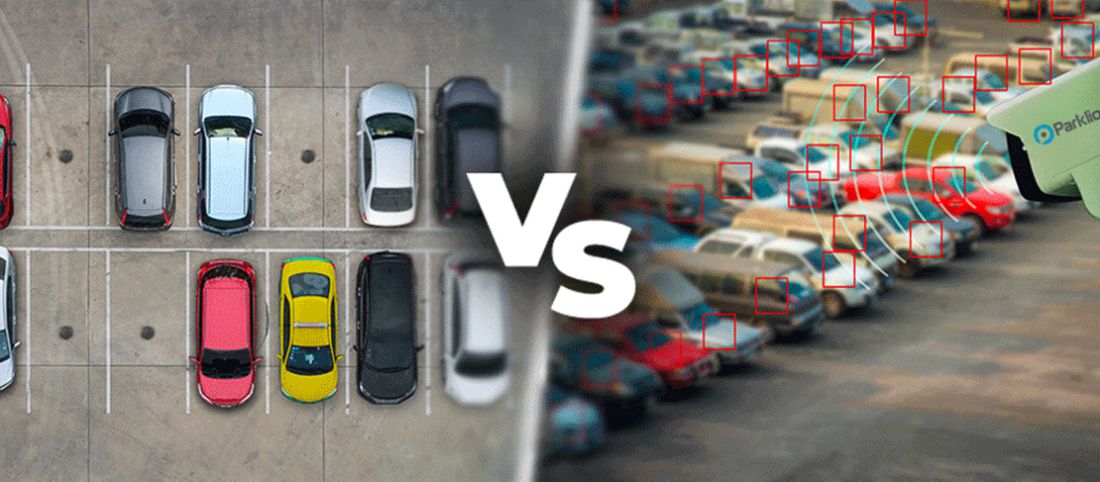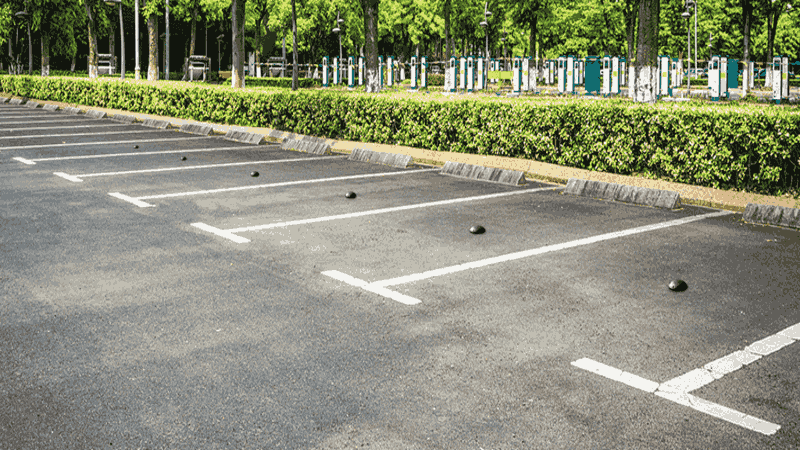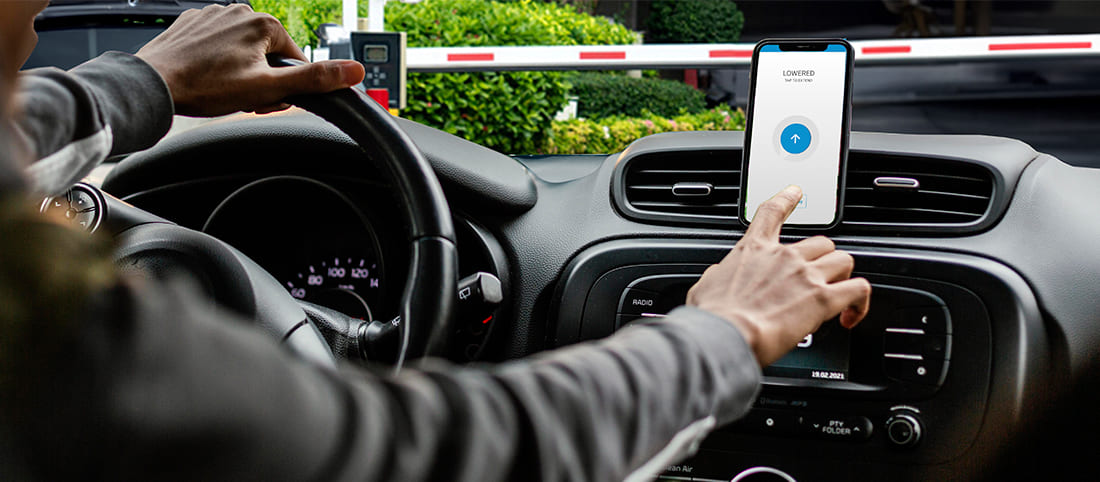Parking Space Detection: Sensors vs Camera | Comparison Review

Parking lot occupancy management used to be a challenging process that required a significant amount of time and manpower. Fortunately, the parking industry has witnessed major technological progress over time. By employing technology to keep track of how many parking spaces are available on a parking lot, you may now increase the efficiency of your residential, urban, or commercial parking space. Unlike other systems that attempt to predict parking availability based on previously collected occupancy data, Parking Space Detection Sensors and Parking Detect Camera use real-time information to tell you what spaces are still available. But how to select the best option for your parking lot? Let's evaluate!
Table of contents:
Understanding The Differences Between Detection Methods
Parking system providers are constantly looking for new ways to enhance their parking management solutions so that they can provide their customers with a better experience Parking space detection sensors and camera detection systems are two market-leading solutions for determining how many cars are present in a parking lot at all times, which is the foundation of smart parking systems. When deciding between these two options, it is vital to understand the differences between the detection methods that they employ.
Parking Space Detection Sensors
Parking Space Detection Sensors are used to detect the presence of vehicles in a parking lot and alert users when parking spots become available. Parking detection sensors are installed in asphalt or other types of road surfaces and can be used for both on-street and off-street parking. Some of the most common sensor types are:
- Wireless magnetic sensor uses an induction coil to detect the changes in the earth's magnetic field caused by parked cars located directly above it. It is not recommended to use it near high-voltage power lines since it is vulnerable to electromagnetic interference.
- Ultrasonic sensor uses high-frequency sound waves to scan, collect and transmit real-time parking occupancy information that helps guide drivers to available parking spaces. It works similarly to radar technology but is less precise.
- Radar sensor detects the presence of a car at a certain parking post by using radio waves that are reflected from parked vehicles. It is more resistant to weather conditions and contamination making it more suitable for outdoor use.
- Infrared detection sensor detects and measures IR radiation emitted from an object ( any object with a temperature of 5°K or above emits infrared radiation) as well as the radiation reflected by any object that remains in its vicinity.
Each of these detection mechanisms has its own benefits and drawbacks. When it comes to accurately monitoring the occupancy of outdoor parking lots, no single sensor detection mechanism can provide sufficient precision. This is why smart parking detection sensor-based solutions use dual detection methods in a single system. Dual-detection sensors indicate whether a place is filled or not by employing two distinct detection modalities - ultrasonic and infrared or magnetometer and radar. These systems are able to provide up to 99% accuracy to users, but they're also considerably more expensive than single-detection systems.
Aside from accuracy, one of the most important benefits of sensor-based systems is that they are battery-powered, which means they are completely self-sufficient and do not require an external power source to operate. This is beneficial because it allows you to use them in places where power sources are not available.

Parking Detect Camera
Parking Detection Camera is a smart parking solution that uses cutting-edge camera technology to automate parking spot surveillance. Parklio has created a sophisticated AI system called Parklio™ Detect that monitors, analyzes, and reports car parking data. No more guesswork - the system will notify you when someone leaves or enters a certain parking place, as well as how long they remain there. This technology is simple to operate and very dependable. The camera captures the parking image/video, and the parking floor plan is formed based on it. As a result, the user enjoys continuous video streaming of the monitored parking space.
Parklio ™ Detect includes:
- a 5 MP full-time color camera that detects up to 70 vehicles at once with an accuracy of 99%
- a GDPR-compliant license plate detection so you know who is using your parking lot at any given time
- real-time data on how many vehicles are in each spot
- analytics report of parking occupancy based on types of vehicles (car, truck, van, bus, or motorbike)
- daily or monthly payment and sales reports
- notification if the camera's view has been obscured, blocked, or altered
Detect cameras are designed for indor/outdoor use and are resistant to any heavy weather conditions, such as snow or rain and they can also work during the night thanks to our AI system. They are ideal for use in car parks, on industrial sites, residential estates, or any place else occupancy monitoring is required.
A potential challenge when installing camera-based parking-detecting technology is the power supply. Cameras operate on electricity and require a constant and stable source of power. You should make sure that your system has an uninterrupted power supply so that it can continue to work even if the power goes out. If you don't already have one, consider adding one as part of your installation.
The Bottom Line
Now that we have seen the differences between detection methods and how they operate, it's time to evaluate which one is more advanced. For clarity and a speedy decision-making process, we'll also evaluate the Parking Space Detection Sensors and the Parklio™ Detect in terms of cost-benefit analysis and functionality. The cost-benefit analysis consists of comparing the costs of installing each method against its benefits. In terms of functionality, we will revise the range of operations that each solution provides.
Expensive Implementation vs. Easy Installation
When purchasing a parking availability detection system, the price is not the only factor to consider. Other factors to consider are installation charges and maintenance costs. While the upfront price of Parklio™ Detect is higher than the price of Parking Space Detection Sensors, the Detect is easier to install and maintain which makes it more affordable considering all costs. Detection sensors need to be installed in every single parking spot in your parking lot, which means you'll have to employ contractors, pay for setup and labor — and worry as the costs go up! The inevitable end result is an expensive implementation. Once operational, Parking Space Detection Sensors will need to be examined on a regular basis and replaced when required. This raises labor expenses and increases the possibility of human mistakes during installation or maintenance, which can result in reduced accuracy.
On the other hand, Detect simply needs one camera per 200 parking spaces - no digging, no new investment, no hourly rate for contractors or labor. Instead of installing sensors in every single space, you simply need to place a camera in your parking lot and you can immediately detect when someone has parked their car in a certain location with great accuracy. For best results with our detection cameras, we recommend a position that ensures at least 70% visibility of the lot with minimal obstructions such as trees or buildings.
In addition to being easy to install, Parklio™ Detect is also easy to integrate with other existing solutions such as ticket machines, payment systems, and access control systems thanks to API. This allows clients to optimize their operational activities quickly and easily.

No Flexibility vs. Advanced Analytics
Parking Space Detection Sensors are useful for determining how many vehicles are in a lot at any given moment, but they have no flexibility when it comes to tracking or monitoring the vehicle movements inside a parking lot. That's where Parklio's camera-based parking-detecting technology comes in. The system can provide additional information about the type of vehicle occupying the space and determine if a parked vehicle is occupying two places at the same time. If a vehicle takes up more than one parking space, the system will immediately convey the information to the owner. In the event of a car overstay, the system will meticulously record the occurrence, allowing the parking lot owner to take necessary action.
Additionally, the system operates 24 hours a day, seven days a week, in all weather conditions, giving you constant access to parking lot data. Adding an additional layer of security and accountability at a low cost? That's what we call a win-win scenario.
For example, if you manage a mall parking lot the system's advanced analytics provides vital information about consumer behavior over time: how long they stay, even what times of day they shop, and whether or not there are any patterns to their visits. Payment and sales reports will give you a snapshot of what's happening with your customers and how they're interacting with your business.

Parklio™ Detect Wins the Cost-Benefit Analysis
If you work in the parking lot management industry, you're probably familiar with the term "Parking Space Detection Sensors." Parking Space Detection Sensors are still commonly considered to be the most accurate means of detecting parking occupancy However, all things considered, it is fair to conclude that Parking Space Detection Sensors are becoming obsolete despite their effectiveness.
Parklio™ Detect is a game changer: it is an innovative parking management solution enabling you to detect the number and the types of vehicles parked in your parking lot. It also allows businesses to improve their operational activity and delivers sophisticated analytics with valuable data on consumer behavior over time. On top of that, once the system is installed, maintenance is easy and time-saving, which results in lower costs for your company.
We are certain that Parklio™ Detect will have a positive impact on your business. You'll be able to analyze traffic patterns and learn more about how people act during peak hours vs off-hours—and you'll be able to utilize that knowledge to enhance customer service.


